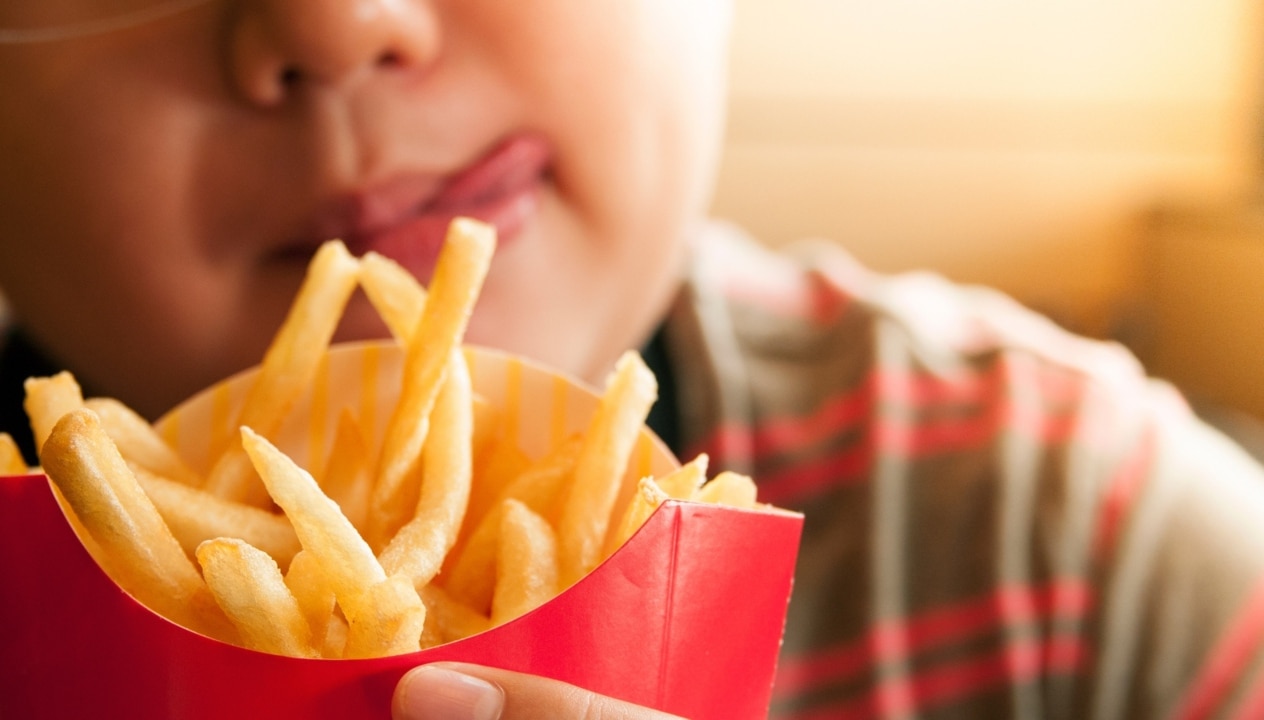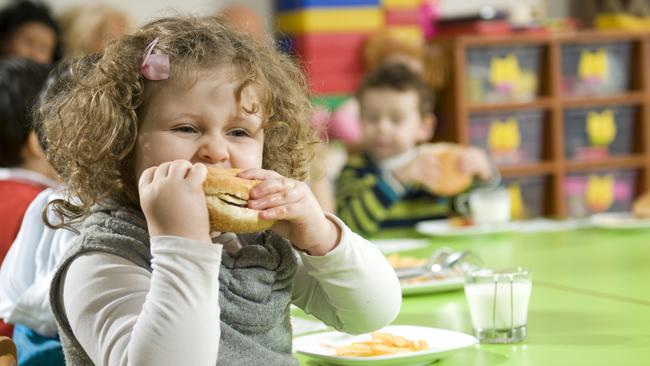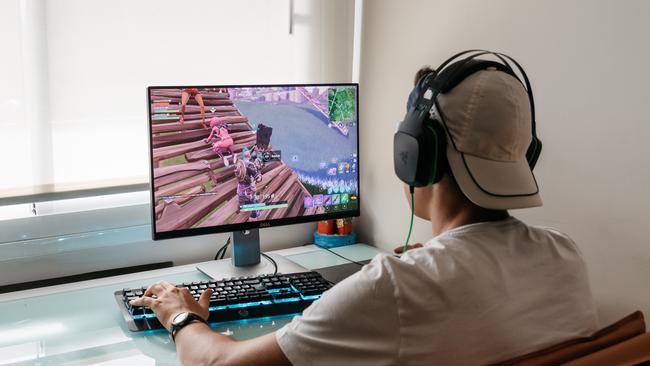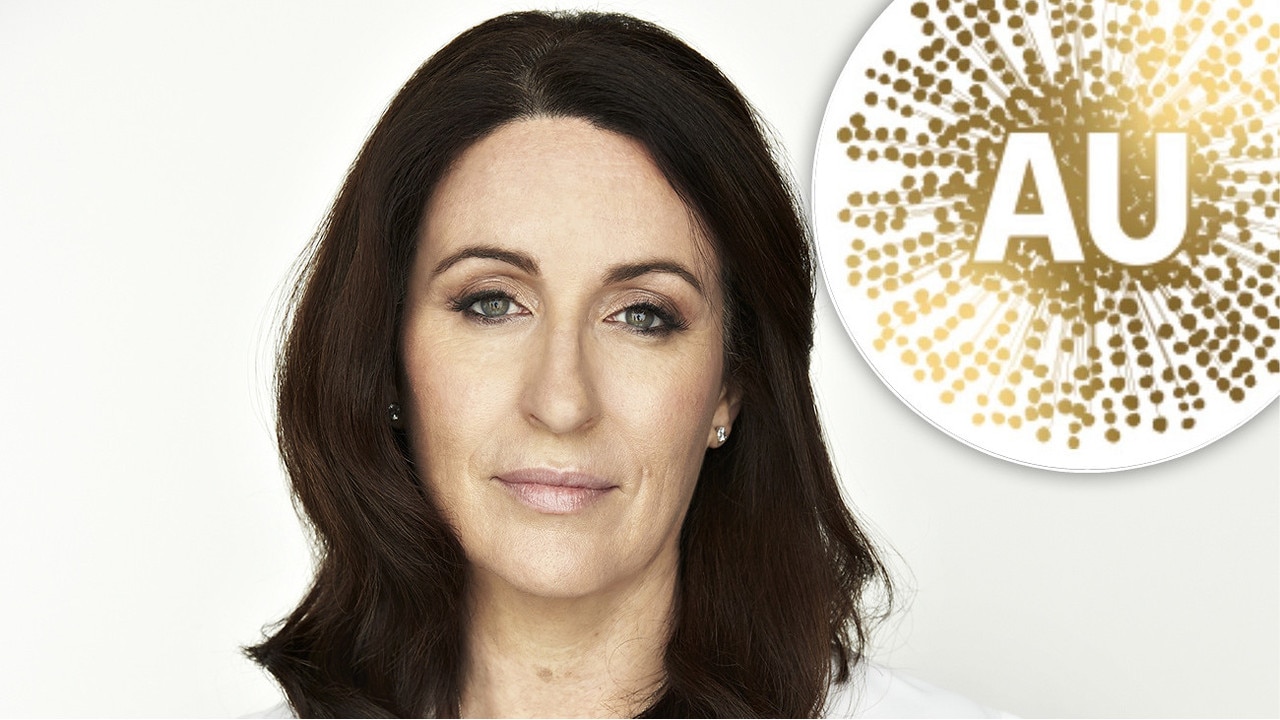School lunch box warriors are completely missing the point
The health lobby requesting $100 million to improve school lunches as a way of tackling the obesity epidemic are missing the point, writes David Penberthy. We can start by pulling them away from games like Fortnite.

Rendezview
Don't miss out on the headlines from Rendezview. Followed categories will be added to My News.
Some of my dodgiest culinary memories involve the delicacies we used to procure from our school canteen.
As a school student in Adelaide in the 1970s, our tuckshop was a monument to the joys of sugar and fat. In addition to the daily offering of meat pies, Cornish pasties and sausage rolls, there was an assortment of sweet buns and cakes, all of them covered in icing or filled with cream.
RELATED: National focus on school canteens urgently needed to tackle obesity crisis
There were kitchener buns, finger buns, chocolate doughnuts. Even the relatively healthy banana cake came with a centimetre-thick topping of vanilla icing studded with walnuts. Once a week during winter, the volunteer mums who ran the tuckshop sold hot buttered bread rolls for five cents. The rolls were double-cut, wrapped in foil and baked until the bread became hyper-saturated with Exxon Valdez-sized slicks of melted butter.
They also sold plain crusty rolls which we would tear in half, rip out the crumb, slather with butter and fill with potato chips or Twisties for another high-fat, high salt treat. There was no fruit juice. You could have Coke, Fanta or lemonade, strawberry or chocolate milk. If you fancied an ice block, the artificially-coloured, high-sugar Sunny Boy was the only way to go.
MORE FROM DAVID PENBERTHY: The trend that’s wrecking kids’ sport
In these less enlightened times, no-one talked about an obesity crisis, largely because we didn’t have one. With a few exceptions that probably had more to do with the vagaries of genetics, all the kids I can remember at school were stick-thin or normally proportioned.

I was reminiscing about our school lunch menu this week while reading about the joint push by the Obesity Policy Coalition and Deakin University’s Institute for Health Transformation to overhaul our school canteens. The campaign seems like a noble problem-solving exercise, but one that is looking at the wrong part of the problem.
The organisations want school canteens to be policed and forced to offer only healthy food. They are seeking $100 million from the Federal Government to fund grants for canteen equipment and a new role called “healthy eating advisers” to make sure that no-one is peddling hot dogs or French fries to unsuspecting youngsters.
MORE FROM DAVID PENBERTHY: The hideous danger of conspiracy theories
These healthy eating advisers sound like the human embodiment of the modern phenomenon of lunch box shaming, where instead of sending passive-aggressive notes to parents admonishing them over the content of their children’s lunch boxes, these culinary cops will be able to roam the quadrangle looking for chocolate crackles.
Further, in keeping with the modern trend towards solving problems by either taxing things or banning things, the organisations are also calling for statutory restrictions on junk food advertising during children’s programs.

As I suggested at the start, the weirdest thing about this whole conversation is that in the past 40 years our food habits and our kids food habits have changed for the better. Family dinners were once bland and resolutely Anglo affairs where you’d have a roast one night and rissoles the next, cook everything in dripping, crumb and fry the lamb chops and drown them in gravy, limit your veggie intake to potatoes, carrots and peas, while never sullying the table with French or Italian-style vegetable dishes or the lighter cuisines of our Asian neighbours.
The food habits of most Australian children have changed too. The tuckshop menu I described above is a thing of the past, with most kids eating more unprocessed foods or “exotic” lunches such as sushi, rather than the stodge of yesteryear.
MORE FROM DAVID PENBERTHY: Booze and cigarettes are not the same
The Obesity Policy Coalition and Deakin University are right when they say that there are some parts of Australia where a dietary crisis is matched by an obesity crisis.
“There should be no postcode lottery when it comes to obesity and obesity prevention,” report lead author Associate Professor Gary Sacks said this week. We all know the postcodes the professor is talking about, those places where the major intersections are a four-way meeting point for a Hungrys and a Maccas, a Red Rooster and a Subway, and perversely, the level of poverty is matched only by a preparedness to waste money on processed fast food.
But the thing is, the obesity problem goes beyond these impoverished and less educated areas. Adults and kids are now fatter across the board — including adults and kids whose diets are better than they have ever been, or no worse than they once were.
MORE FROM DAVID PENBERTHY: Criticism of Women’s AFL is rooted in male insecurity
So what has changed? The answer seems simple. Our primary school might have had plenty of dodgy food, but there was one thing it didn’t have. A computer. While we were all shovelling crap down our throats, we led constant and demanding physical lives.

For the better part of two years in upper primary school, my mates and I found a vacant lot near the local pub and spent two to three hours a day turning it into a BMX track. We used shovels and rakes to move the earth by hand into chicanes and figure eights, we made jumps out of old planks and packing crates. Once it was done we rode around like maniacs until nightfall.
This was on the days we weren’t training or playing school sport. These same obsessions continued into high school, where we would all ride after school to a place called Dingley Dell and trash ourselves on hilly bush tracks.
The rise of social media and gaming, coupled with a statistically dubious level of parental paranoia about safety, means that the X-Box is the likeliest place you will find many boys after school these days. A 2015 study on children’s screen time by the Australia Institute of Family Studies found that by the age of 13, kids spend more than three hours average per weekday and almost four hours per weekend day in front of a computer, a phone or TV. That’s a whopping 30 per cent of a child’s waking time.
The health lobby mean well but they’re missing the point. We can feed our kids green beans and steamed salmon throughout their entire childhood, and it won’t make a sniff of difference if they’re in their room playing Fortnite.


